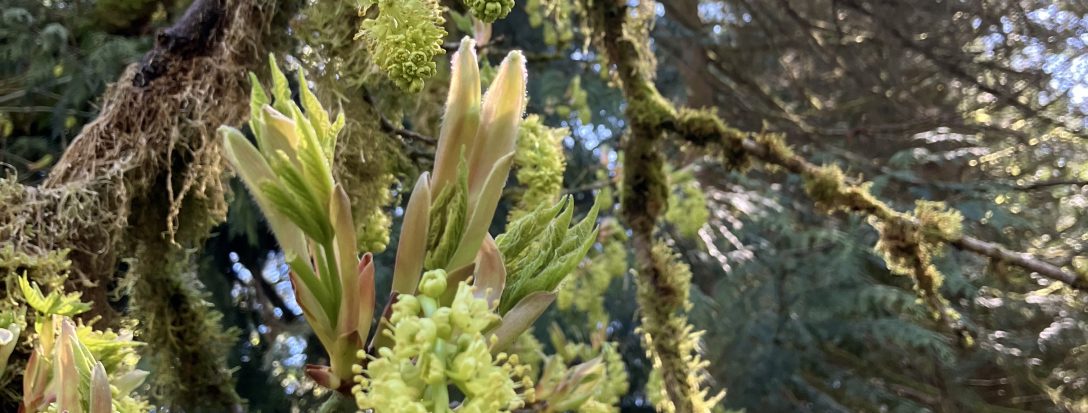
We’re tilling up some new agricultural restoration space at EEC Forest Stewardship. Our panhandle has been the sight of continual mowing for thirty years. It’s about a quarter acre of some of the best soil on our land. This growing zone is being renewed with a propagation of fresh plantings. Using mostly native species, we’re setting a hedge for added value in vertical vegetation. The plan includes low growing species to prevent any unwanted entanglement with power lines across the road. New introduced plantings include “cranberry tree” Viburnum opulus, which is a rarity in the wild these days. It will be the main species in our hedge, and quite the wildlife attraction, so animals will get a boost of food and shelter. Our other two minor hedge species are a purple snow-berry and yarrow. There’s also a hint of red currant, comfery, and Gaillardia pulchella. In addition to planted species, we broadcasted three different seed mixes for PNW wildflowers. This nearly 300 foot long space will be a pollinator strip for the neighborhood.
We had planned a few more years of sheep grazing as the main agricultural practice for the strip, but we saw an opportunity to take out the sod, removing any need to graze, and are now restoring the land for ecological enhancement and diversity. The south neighbor will have a native plant natural fence to enjoy, north neighbor will receive an attractive boarder hedge set well back from the road. Our selected species can survive well on their own, with little human input, and we’re creating more good wildlife habitat and ventricle vegetation to enhance the landscape biodiversity, water conservation, and so much more.

Most local soil has quite a bit of glacial till, making it rocky and difficult to farm. But this particular strip stretched into what was a shallow lake left after the glaciers retreated further north. There is an abundance of good tilth for growing things, and the older trees left as standards a lifetime ago, testify soil health and water abundance- fertile land. There are a couple of places where water pooled in some tractor compression marks my neighbor left after an unexpected exploration of the freshly tilled soil. It’s a helpful sight map to plant species that can handle occasional standing water during atmospheric river events. The clay count is high in this soil, due in part to years of compression from vehicles driving over it and mowing, which prevented much needed thatch building better soil over time. The clay holds water, but introducing more vegetation and diversification within the soil will create better draw of moisture into the ground, replenishing our groundwater systems drinkable water.
Mulching will be key in keeping up with this initial setting of new growth. Grass will creep back in, but hopefully, once the newly planted vegetation establishes, the change in micro climates will keep grass out of the hedge, and managed with occasional road side trim with the weed wacker or scythe. We’ll move the sheep along it once or twice a year for a good cut of the hedge, and prune annually as needed. Pollinators and other insects are already utilizing the new environment, EEC will maintain it, and mother nature should do the rest.


Looks amazing! All best for the job
LikeLike